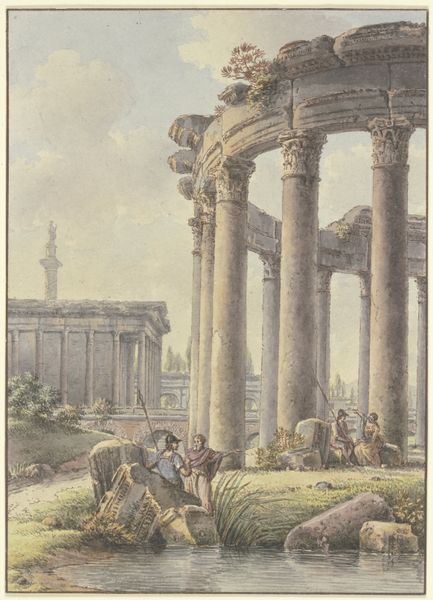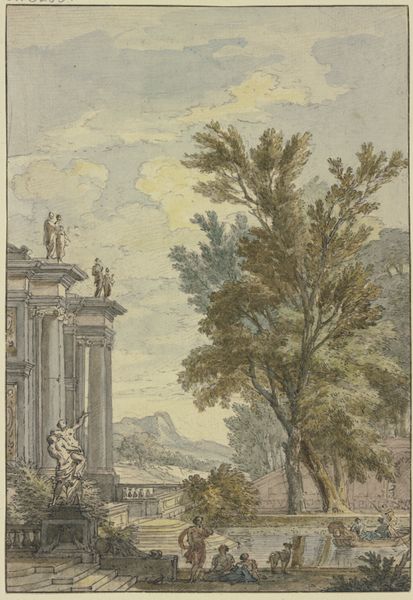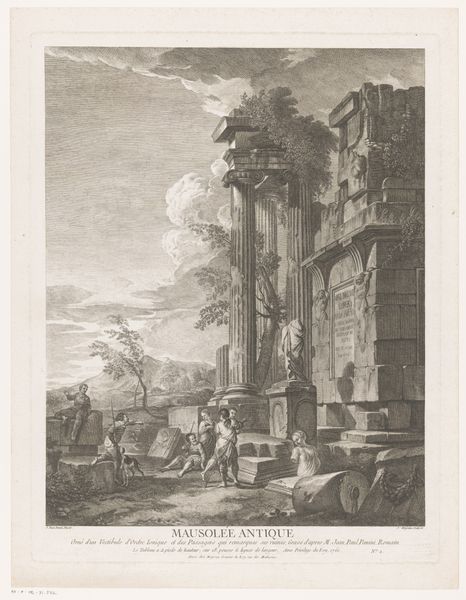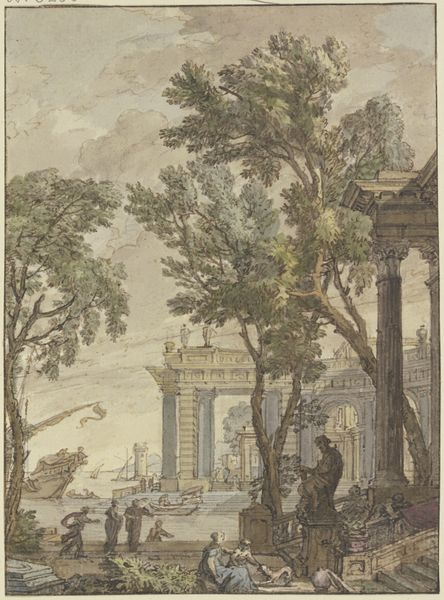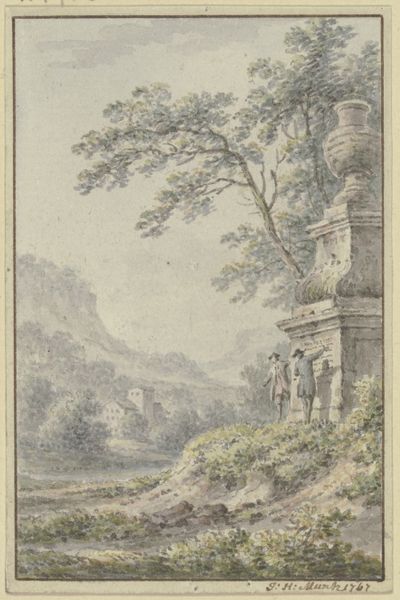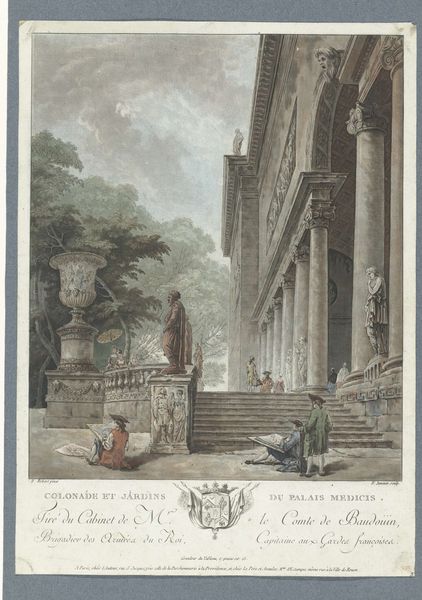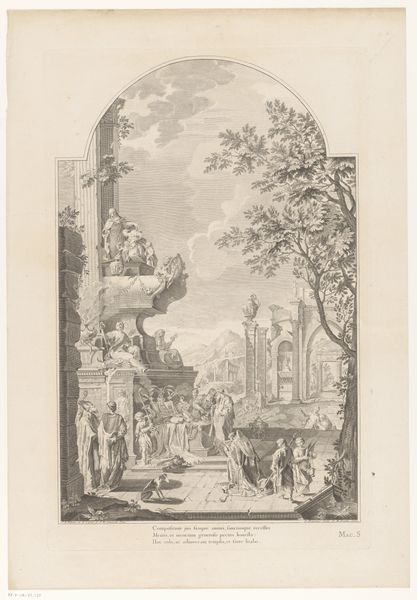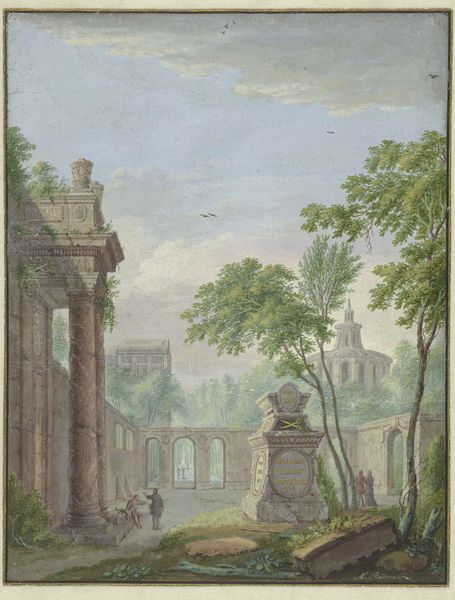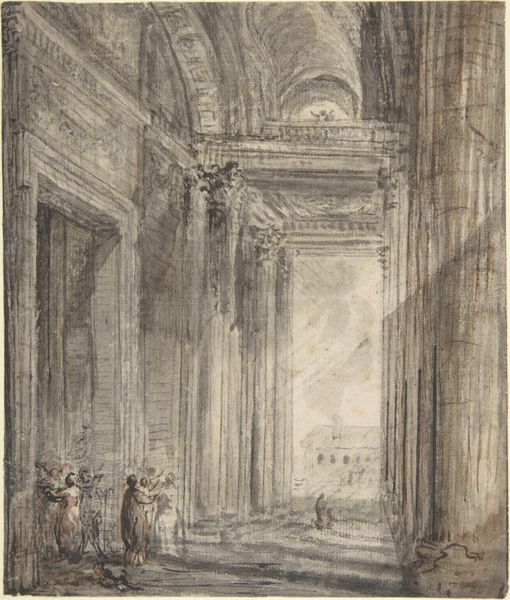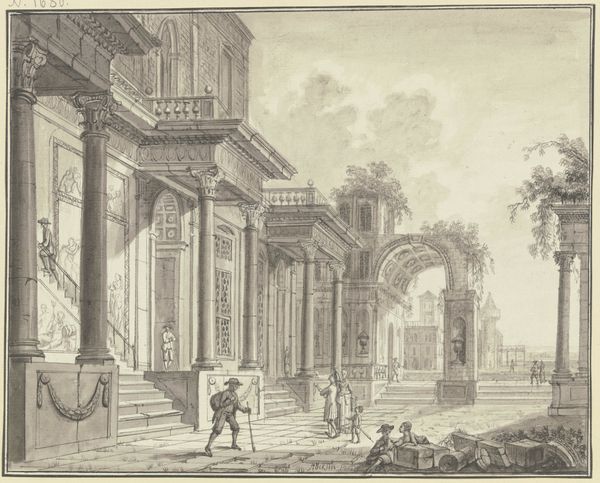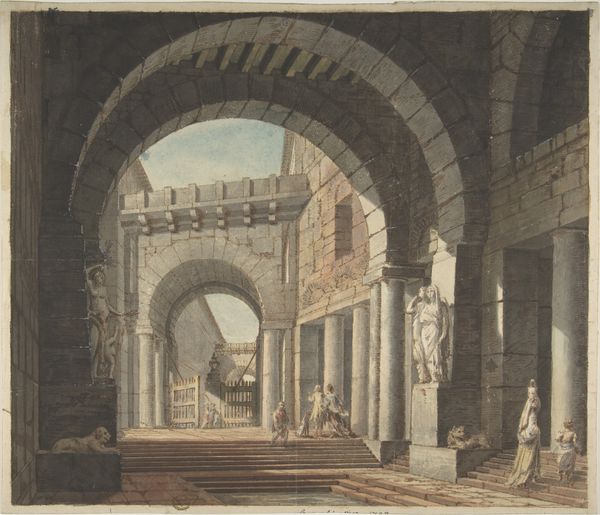
Architektonisches Capriccio_ Ruinen einer Tempelfassade, im Hintergrund Landschaft mit Gebäuden und Seebucht
0:00
0:00
drawing, painting, watercolor, ink, architecture
#
drawing
#
painting
#
landscape
#
watercolor
#
ink
#
coloured pencil
#
classicism
#
cityscape
#
history-painting
#
architecture
Copyright: Public Domain
Curator: I am drawn to the quietude, the subtle washes of color that create a serene atmosphere. The cool blues and gentle earth tones give the ruin a certain melancholy beauty. Editor: Precisely. What you’re observing is a piece called "Architektonisches Capriccio: Ruins of a Temple Façade, with Landscape in the Background with Buildings and Bay". This work, held at the Städel Museum, is attributed to Victor Jean Nicolle. It appears to utilize a combination of ink and watercolor. Curator: A Capriccio then. That explains the somewhat fantastical assemblage of architectural elements. It's not quite a documentary, is it? It is about the image of classicism in architecture that inspires awe? Editor: No, absolutely not documentary. Nicolle uses a blend of real and imagined Roman ruins to compose a romantic vision. These architectural fantasies became popular souvenir pieces for Grand Tourists, reminding them of the grandeur they were supposed to feel. Curator: Grandeur certainly feels like the intention. Even in its dilapidated state, the temple evokes power and civilization. The columns, though crumbling, stand as testaments to past glory, and are juxtaposed to men who have pikes or spears with no clear military apparel or function. Editor: And consider the people depicted. We see figures casually interacting amongst the ruins, almost dwarfed by the scale of what once was. Their presence transforms the site into a living space. Curator: So, not just a memento of architectural marvels, but a meditation on the passage of time. And the interplay of history and contemporary life. The light almost seems to symbolize enlightenment shining upon this ruin. Editor: Precisely. Through images like these, the Grand Tourists sought not just to acquire artwork but, it can be argued, an acquisition of "cultured" power and social capital, linking themselves to a lineage of greatness through the very act of collection. The creation and purchase of artworks supported and drove that very image-based economy. Curator: Looking at it with that lens, this simple watercolor takes on far greater weight. It reveals how artworks themselves perpetuate systems of power. I appreciate it on a different level now. Editor: As do I. The visual symbols resonate so strongly once we uncover their history and social context. A seemingly tranquil image is loaded with potent cultural information.
Comments
No comments
Be the first to comment and join the conversation on the ultimate creative platform.

